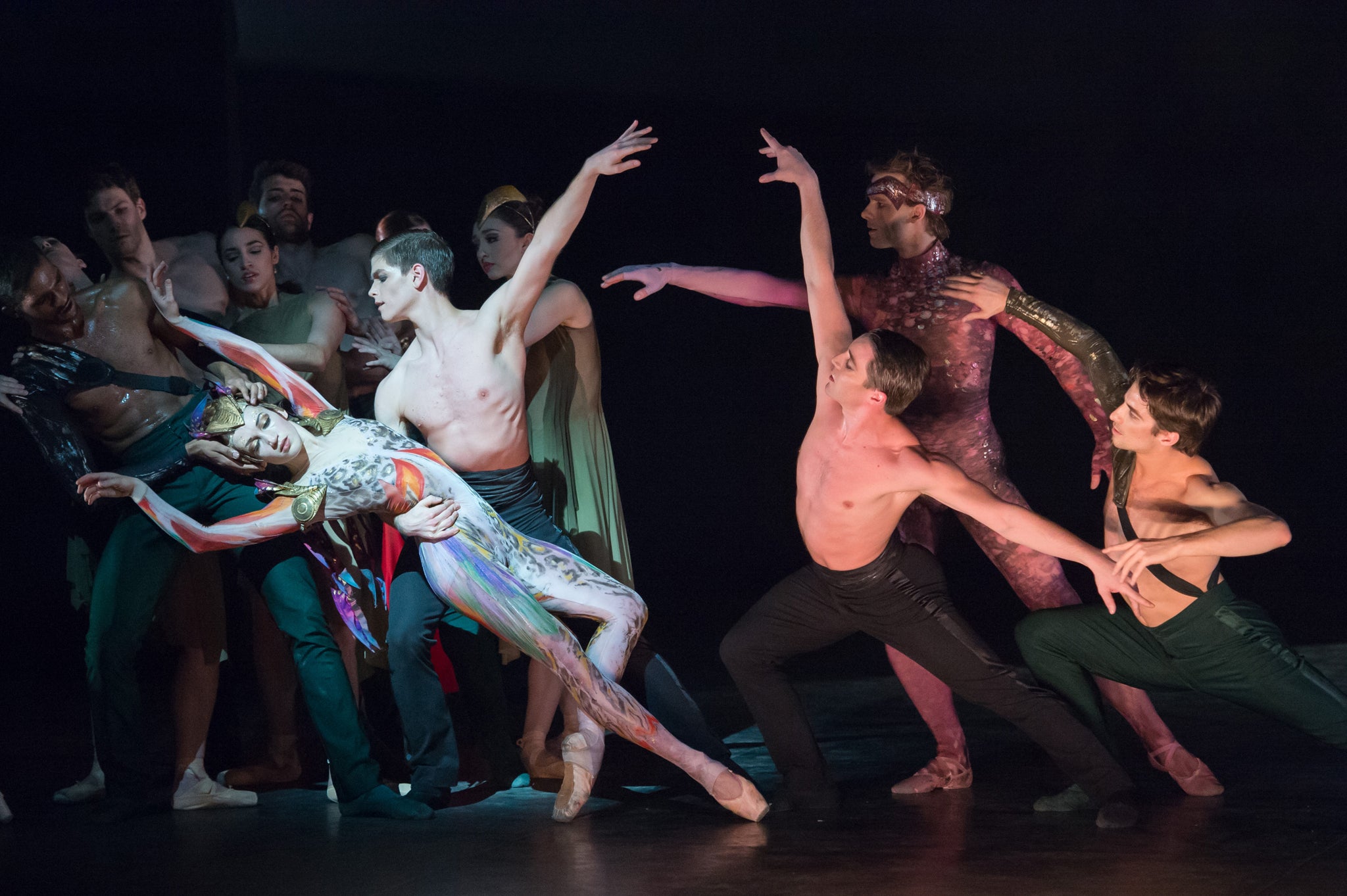Lest We Forget, Barbican, dance review
Barbican Theatre, London

Your support helps us to tell the story
From reproductive rights to climate change to Big Tech, The Independent is on the ground when the story is developing. Whether it's investigating the financials of Elon Musk's pro-Trump PAC or producing our latest documentary, 'The A Word', which shines a light on the American women fighting for reproductive rights, we know how important it is to parse out the facts from the messaging.
At such a critical moment in US history, we need reporters on the ground. Your donation allows us to keep sending journalists to speak to both sides of the story.
The Independent is trusted by Americans across the entire political spectrum. And unlike many other quality news outlets, we choose not to lock Americans out of our reporting and analysis with paywalls. We believe quality journalism should be available to everyone, paid for by those who can afford it.
Your support makes all the difference.Inspired by the First World War, English National Ballet’s Lest We Forget is both moving and ambitious.
It’s packed with firsts: big name choreographers Akram Khan, Russell Maliphant and Liam Scarlett making their first works for the company, two new scores, English National Ballet’s own debut at the Barbican. It’s Tamara Rojo’s boldest move since she became director of English National Ballet, and the most exciting.
Khan’s Dust, his first work for a ballet company, explores the impact of the war on women. It opens with a writhing man, Khan himself on opening night, twisting of the floor. He’s framed by a line of people, holding hands over their shoulders, recalling photographs of blinded soldiers in single file. But this file bucks and curls, a wave of motion driving through the line of bodies.
When the men leave, vanishing up the no-man’s-land slope of Sander Loonen’s set, the women turn to work. The churning dances have precise, pumping arm movements, matching the rhythms of Jocelyn Pook’s new score. The same gesture can suggest production line repetition and growing strength, with a sense of loss in a few yearning shapes.
A duet for Khan and Tamara Rojo is full of balances and counterbalances, Rojo poised with her legs hooked round his waist. When they part, she moves into a formal waltz step, arms holding an invisible partner. At last she spins alone, arms out, no longer expecting him back.
Dust is superb, using weighted dance to evoke wartime experience and the changes it brings. English National Ballet’s dancers take on Khan’s contemporary style with devoted care. It’s dancing full of pain and power.
Liam Scarlett’s No Man’s Land, which opens the evening, has strong moments but slips back into convention. Danced to music by Liszt, it’s about loss and longing. Women stand at the workbenches of Jon Bausor’s set, while men prepare for war at the front of the stage. There’s a lovely contrast between the men’s big movements and the women’s careful, precise hands, casting dust into the air. Scarlett’s big duets have less character, with lots of acrobatic partnering.
George Williamson’s Firebird is the odd one out: in an evening of new works inspired by war, this semi-abstract fable doesn’t fit. Ksenia Ovsyanick shows her flexibility as the Firebird, while Nancy Osbaldestone dances with bright attack as the Celebrity.
Russell Maliphant’s Second Breath focuses on the men at the front. Men and women, dressed by Stevie Stewart in stylised military coats, stand on a bare stage, tilted forwards as if leaning into the wind. Andy Cowton’s score mixes live orchestral sound and recordings from the Imperial War Museum to make an atmospheric soundscape.
The voices describe moments of despair: men falling and shaking, finding it hard to go on. The dancers clamber over each other, then collapse in dead falls. It’s a characteristic Maliphant image, but here the dancers’ courage and trust becomes an expression of fear. Alina Cojocaru’s duet with Junor Souza adds personal depth to a bleak and affecting battlefield.
Until 12 April. Box office 020 7638 8891.
Join our commenting forum
Join thought-provoking conversations, follow other Independent readers and see their replies
Comments